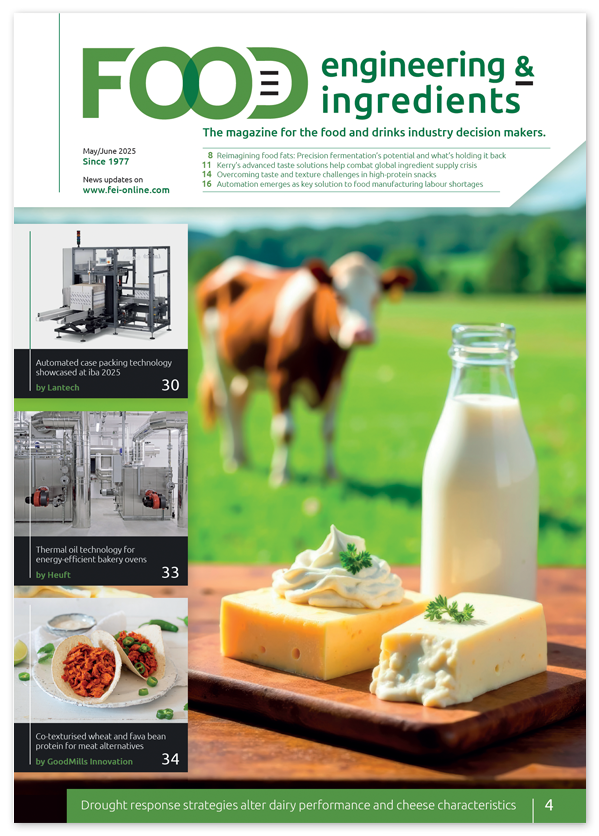Barry Callebaut to produce biochar from cocoa by-products to promote sustainability
Barry Callebaut, one of the world’s leading manufacturers of high-quality chocolate and cocoa products, recently released its fourth Forever Chocolate Report outlining the progress the company is making towards its 2025 targets. With innovation at the heart of their advancement, this year the company has embarked on an industry first project to commence the transformation of cocoa by-products into biochar – in an effort to reduce carbon emissions and produce green energy.
Geza Toth, Global Forest and Carbon Program Lead, explained: “Biochar looks very similar to charcoal, and is produced by pyrolysis. In simple terms, this means that biomass, such as agricultural or forest biomass waste, is heated to a very high temperature without oxygen to produce energy and biochar. What is very interesting about biochar is that it can help to mitigate climate change. It can be used to produce energy, permanently store carbon, improve soil quality and reduce waste.”
Agriculture’s black gold
Over the past two years, Barry Callebaut has been working on an innovative project to produce biochar, also known as ‘agriculture’s black gold’. In 2020, they ramped up the infrastructure to commence producing biochar in one of their European factories.
“Using our cocoa shells to produce biochar, will help us with achieving our Forever Chocolate target of becoming carbon positive by 2025,” Toth added. “Ultimately, we want to benefit the climate by creating carbon circularity. We can use the cocoa shells to create green energy in our factories, as a fertilizer enhancer in soil, and as a carbon sink. A simple example of a carbon sink is that while trees can ‘temporarily remove’ carbon from the atmosphere, biochar applied to soil can capture carbon and store it for hundreds of years, thus creating a permanent carbon sink.”
Neelke Verhelst, Global Sustainability Operations Lead, said: “Admittedly, at the beginning, the idea of producing biochar was quite conceptual. However, one of the great benefits of Barry Callebaut is the innovative culture and encouragement to think outside-of-the-box to find creative solutions. We also partnered with Circular Carbon, who provided us with the technical expertise to translate the idea of producing biochar into practical reality.”
Explaining the process of converting cocoa shells to green energy, Toth said: “In our factories the energy being released by the very efficient pyrolysis process of turning cocoa shells into biochar will be re-used for steam production, thus creating green energy. We will use this energy to help power our facilities.”
Discussing the company’s plans for improving soil quality, Neelke said: “We are also looking into the production of biochar at farm level. In the cocoa origin countries where we source from, Biochar can be used on cocoa farms for use as a natural fertilizer enhancer. Biochar has a remarkable ability to act like a sponge, so if you mix fertilizer with Biochar, it enables the fertilizer to be very slow releasing. At farm level, instead of using cocoa shells, which will be used at processing level to create green energy, we are looking at creating Biochar from agricultural residues, like empty cocoa pod husks, pruning material, and other residues.
Circular economy
“The ultimate goal is to keep biomass on the farm and enhance living soils. By combining the use of biochar with compost, for example, we also reduce methane emissions from the decomposition of farm waste. To put this into perspective, the carbon released into the atmosphere from dead plant material and decomposing biomass, globally, is about 10 times more than carbon released by fossil fuel burning. So you can see, there is a very good reason to consider how we can utilize agricultural ‘left-overs’ to create valuable biochar. This is a real circular economy business case, which benefits both cocoa farmers and business”
Toth noted that they were “collaborating with the Ithaka Institute and currently trialling the use of biochar in the field to evaluate the impacts of improved soil quality. Our aim is to increase cocoa yield, reduce the need for agrochemicals, and ultimately increase farmer livelihoods. In terms of using biochar for green energy to fuel our facilities, we are very excited that the infrastructure is now established in one of our European sites, with the plan to scale this further.”
Toth added that their Forever Chocolate target to be carbon and forest positive combines, in a systematic way, forest protection, conversion of monocultures to agroforestry, biochar application, ecological restoration, landscape-level thinking. “The combined impact is so much more than disconnected projects. We want to make our activities available for our customers, to engage, scale and innovate with us.”
For more information, visit: Barry Callebaut – Forever Chocolate:
www.barry-callebaut.com/en/group/forever-chocolate-our-plan-makesustainable-chocolate-norm


